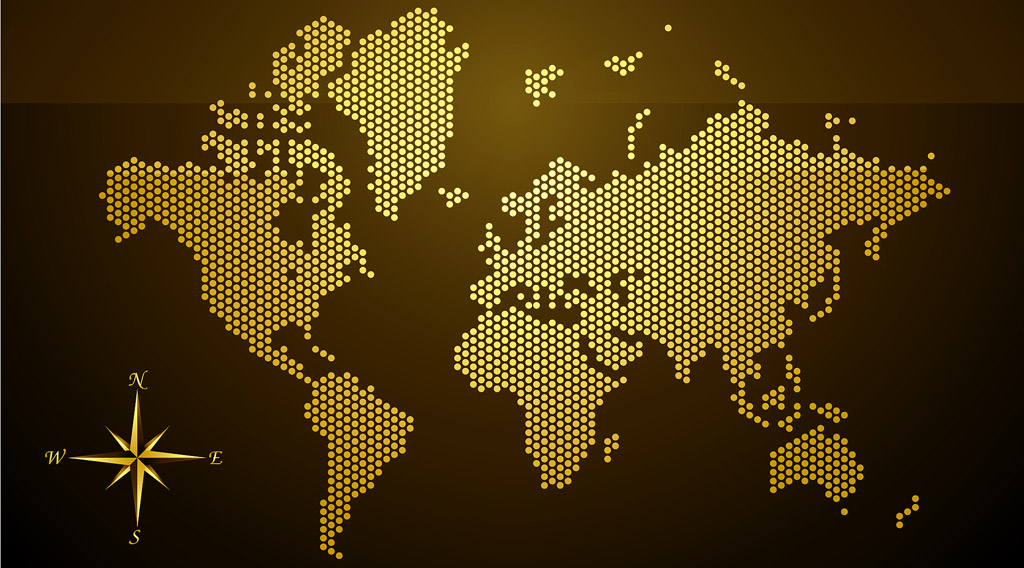 Currently, no countries operate on a pure gold standard. That means no government directly tethers physical gold to its currency’s daily valuation or exchange rate on a fixed basis. This once-universal economic system has been replaced by a fiat currency experiment. Without tangible backing, paper money derives value from more abstract factors such as governmental strength, economic stability, and consumer confidence. The shift to a free-floating fiat system allows for more flexible monetary policies and unimpeded growth but also introduces the risk of overspending which leads to inflation, currency devaluation, and economic weakness.
Currently, no countries operate on a pure gold standard. That means no government directly tethers physical gold to its currency’s daily valuation or exchange rate on a fixed basis. This once-universal economic system has been replaced by a fiat currency experiment. Without tangible backing, paper money derives value from more abstract factors such as governmental strength, economic stability, and consumer confidence. The shift to a free-floating fiat system allows for more flexible monetary policies and unimpeded growth but also introduces the risk of overspending which leads to inflation, currency devaluation, and economic weakness.
The Rise & Fall of the Gold Standard
The history of gold and silver as currency and stores of value goes back millennia. Ancient civilizations typically conducted trade using these precious metals due to their widespread recognition, natural scarcity, ease of divisibility, and impressive durability. The practice of basing economic systems on precious metals continued through the creation of modern nation-states.
The economy of the original 13 colonies was dominated by physical gold and silver coins from foreign nations. For over 80 years, the US economy operated under a bimetallic system of gold and silver. However, the government eventually embraced the gold standard with the Coinage Act of 1873.
The economies of Great Britain and its colonies had already been fully backed by gold since the early 1800s. Eventually, the gold standard became the foundation of the international monetary system. Even as paper banknotes rose to prominence, governments remained committed to the gold standard by backing up their issuance of currency with physical gold reserves.
In the throws of the Great Depression, President Franklin D. Roosevelt passed the controversial Gold Confiscation Act of 1933, demanding citizens turn in their gold holdings. With gold removed from private circulation and centralized under government control, this order shifted the US further away from the gold standard than any previous act in history.
The economic burden following consecutive World Wars prompted a shift away from the gold standard on a global scale. In 1944, the Bretton Woods system pegged foreign currencies to the US dollar and backed the dollar with gold. Under this economic order, the dollar became the world reserve currency, and foreign currencies were effectively removed from the gold standard.
President Richard Nixon dealt the final blow to the fledgling gold standard by ending the convertibility of USD to gold in 1972. Known as the Nixon shock, this unilateral decision collapsed the prevailing Bretton Woods system and ushered in the current fiat structure that’s dominant today.
👉 Suggested Reading: The Gold Standard: Everything You Need to Know
Countries on a (Quasi) Gold Standard
Technically, no countries operate on a gold standard after the US led the global shift toward a fiat-currency system. However, the overwhelming majority of governments maintain significant gold reserves to shore up their economies from the risks of a paper-based system.
Arguably, the countries that maintain the highest levels of gold reserves can be said to maintain a quasi-gold standard. Here are the top 10 countries by physical gold holdings.
- United States — 8,133 Tonnes
- Germany — 3,353 Tonnes
- Italy — 2,452 Tonnes
- France — 2,437 Tonnes
- Russia — 2,333 Tonnes
- China — 2,192 Tonnes
- Switzerland — 1,040 Tonnes
- Japan — 846 Tonnes
- India — 801 Tonnes
- Netherlands — 612 Tonnes
Source: Trading Economics
Notably, every major world economy backs up its fiat system with gold. With central banks buying gold at record rates, this practice is only gaining more momentum. This is a tacit acknowledgment of the inherent weaknesses of fiat currency, and a clear indication that gold is still revered for its inherent value.
👉 Related Read: Fed Admits Gold Standard More Effective Than Paper Money
Zimbabwe Introduces Gold-Backed Currency
In April 2024, Zimbabwe became the first country in the 21st century to successfully implement a gold-backed currency. While technically not a gold standard, the new Zimbabwe Gold (ZiG) currency is backed by a collection of securities including foreign currencies and commodities. Most countries only use gold reserves as a hedge, but Zimbabwe has gone a step further by directly backing its currency with gold and other assets. Now, gold prices heavily influence the currency’s stability, dependability, and value.
The country’s central bank hasn’t released specific information regarding the weight of these assets, yet it’s clear gold holds a prominent place among the spread. Government officials have also declared a desire to implement the convertibility of the ZiG for its equivalent value in USD or gold, although details on that potential are scarce. Crucially, the government still has more latitude with this gold-backed currency than on a strict gold standard. However, many see this momentous move as the first step away from a fiat-dominated global economy.
A Return to the Gold Standard?
In light of the evident failures of a paper currency system and the record-setting demand for gold, some people are calling for a return to the gold standard. Many countries are already making moves toward this end.
Prompted by severe economic sanctions and a deep-seated hatred for the US-led global economy, Russia and China are increasingly basing their economies on gold for increased independence, flexibility, and stability. Additionally, the BRICS nations, a consortium of emerging economies, have been considering the creation of a gold-backed BRICS currency. These developments underscore the world’s fundamental distrust of a fully paper-backed system.
Zimbabwe’s gold-backed ZiG currency pierced the veil of doubt many leaders had about the desire and capability of foreign governments to structure economies independent of the US dollar. This development proved the seriousness with which foreign governments approach de-dollarization while establishing gold as the go-to replacement. It’s only a matter of time before other central bans in a similar position follow suit.
It’s impossible to predict whether the US will return to the gold standard in the future. However, it is guaranteed that the economic volatility and instability prompted by the fiat currency system will get worse. US debt is out of control, inflation is entrenched, the dollar is devalued, and global economies are decoupling from US influence. These serious economic challenges are prompting a modern-day gold rush among investors as people seek protection in physical precious metals.
Interested in diversifying your portfolio?
If you’re interested in learning more about diversifying your portfolio with gold and silver, grab a FREE copy of our Precious Metals Investment Guide. It covers everything you need to know about protecting your wealth from the risks of a fiat system with precious metals.


